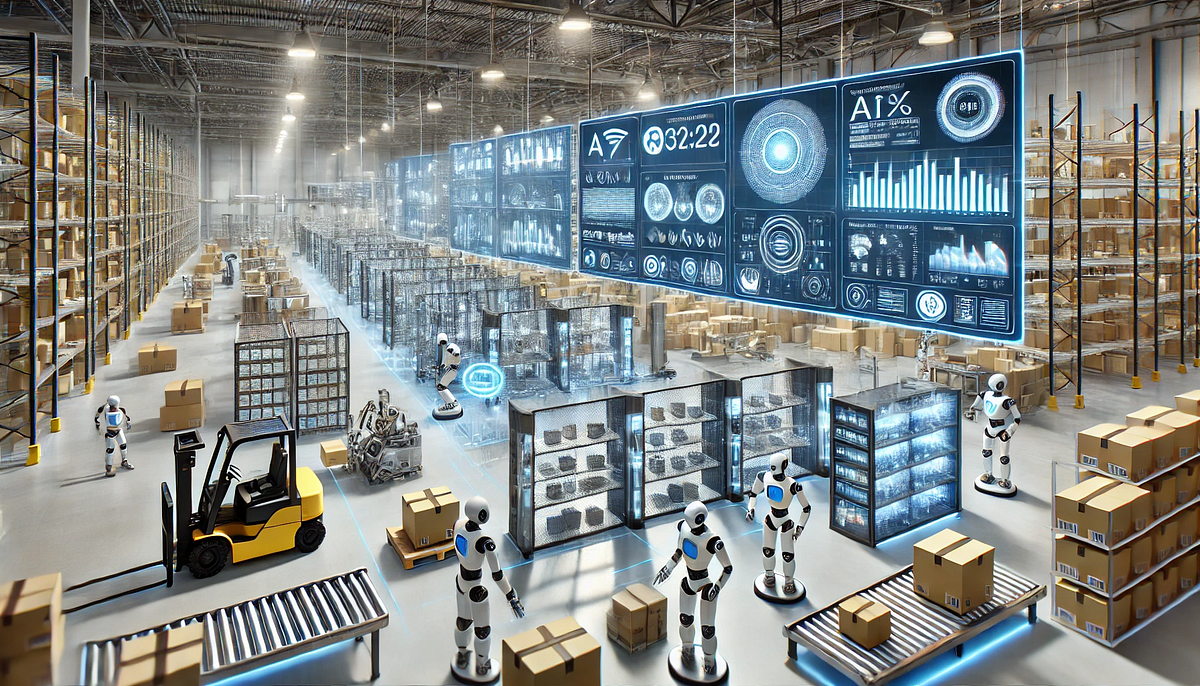- The AI Insider: Your Guide to Intelligent Business
- Posts
- 🌬️ AI vs. Hurricanes: How P&G Outsmarted Mother Nature
🌬️ AI vs. Hurricanes: How P&G Outsmarted Mother Nature
Also: How To Implement AI-Driven Demand Forecasting for Strategic Planning

Welcome to The AI Insider – your essential digest for navigating the AI landscape. Each edition is packed with insights to enrich your business strategy, spark innovation, and keep you ahead of the curve. Let's embark on this journey of discovery and growth together. Ready? Let's dive in! 🔍🚀
✈️ Sky-High Service: How Delta's AI Assistant Soared Customer Satisfaction and Slashed Call Volumes
🌪️ AI vs. Hurricanes: How P&G Outsmarted Mother Nature
📈 Optimizing Supply Chain with AI: From Demand Forecasting to Logistics
🦖 Is Your Strategic Planning Stuck in the Stone Age? This AI Revolution Changes Everything!
Did You Know?
🤖 Delta Airlines implemented an AI-powered virtual assistant to handle customer queries, resulting in improved response times and enhanced customer satisfaction - leading to a decrease of 20% in their call center volume.
🌪️ AI vs. Hurricanes: How P&G Outsmarted Mother Nature 🤖
Procter & Gambler faced significant supply chain challenges due to unexpected events like hurricanes, canal blockages, and the COVID-19 pandemic, compounded by the complexity of managing over 5,000 products and 22,000 components. Traditionally, their supply chain management relied on isolated data systems, requiring extensive labor from five divisions to integrate data.
To address these issues, P&G collaborated with analytics provider phData to develop an AI-powered solution using KNIME’s open-source analytics platform. This solution fully automated data integration from manufacturing, supply chain, marketing, quality assurance, and laboratory information systems, enabling real-time forecasting and enhanced supply chain visibility.
The KNIME platform integrated data from bills of materials, supply chain details, and current inventory, allowing users to perform vital functions:
Data Integration: Consolidated disparate data into a unified view.
Real-time Analysis: Provided live reports on inventory levels, bottlenecks, and critical metrics.
Supply Projections: Used machine learning for predictive analytics to forecast inventory needs and identify supply chain risks.
Demand Forecasting: Analyzed historical data to project future product demand.
The solution improved P&G’s supply chain visibility and resilience, eliminating the need for over 10 experts for data verification, reducing response times for supply chain inquiries to immediate results, and streamlining decision-making through consolidated global meetings.
Have you wondered how big brands maintain such efficient supply chains? AI is a big part of the answer.
Is Your Strategic Planning Stuck in the Stone Age? This AI Revolution Changes Everything! 🦖
1. Assess Current Forecasting Capabilities
Evaluate Existing Systems: Conduct a thorough audit of your current demand forecasting methods, tools, and accuracy. Identify pain points and inefficiencies.
Gather Historical Data: Collect and review historical sales data, market trends, and external factors that influence demand.
Identify Key Metrics: Determine the key performance indicators (KPIs) for measuring forecast accuracy, such as Mean Absolute Percentage Error (MAPE) and Bias.
2. Select Appropriate AI Tools and Technologies
Research AI Solutions: Investigate AI-driven demand forecasting tools that align with your business needs. Look for features such as machine learning algorithms, real-time data integration, and scalability.
Evaluate Vendors: Choose vendors with proven expertise in AI for demand forecasting. Consider factors like implementation time, cost, and customer support.
Pilot Testing: Implement a pilot project to test the selected AI tools on a small scale before full deployment. Measure improvements in forecast accuracy and operational efficiency.
3. Integrate AI with Existing Systems
Data Integration: Ensure seamless integration of AI tools with your existing ERP, CRM, and supply chain management systems. This will enable real-time data flow and comprehensive analysis.
Develop a Centralized Dashboard: Create a centralized dashboard for real-time monitoring of demand forecasts, inventory levels, and supply chain metrics.
Automate Data Collection: Use IoT sensors and other automated data collection methods to feed real-time data into the AI system.
4. Train and Upskill Staff
AI Training Programs: Develop comprehensive training programs to upskill your staff on using AI tools effectively. Include modules on interpreting AI-generated insights and integrating them into decision-making processes.
Continuous Learning: Promote a culture of continuous learning to keep staff updated on the latest AI technologies and best practices.
Cross-Functional Training: Ensure that teams across different functions (sales, marketing, supply chain) understand how to leverage AI-driven forecasts in their specific areas.
5. Monitor, Evaluate, and Optimize
Regular Performance Reviews: Continuously monitor the performance of AI-driven forecasts against actual demand. Use KPIs to assess accuracy and identify areas for improvement.
Feedback Loop: Establish a feedback loop to refine AI models based on new data and changing market conditions. Regularly update the AI algorithms to improve accuracy over time.
Scalability and Adaptation: Scale the AI solution across the organization once proven effective. Adapt the AI tools to accommodate new products, markets, and external factors.
6. Strategic Planning and Decision-Making
Incorporate AI Insights: Use AI-driven demand forecasts to inform strategic planning, including inventory management, production scheduling, and marketing campaigns.
Scenario Analysis: Conduct scenario analysis to prepare for different market conditions and demand fluctuations. Use AI to simulate various scenarios and their potential impact on the supply chain.
Collaborative Planning: Foster collaboration between departments to ensure that AI-driven insights are integrated into all aspects of the business strategy
🚀 Elevate Your Business with AI 📈
Are you poised to take the leap into the world of artificial intelligence? At FINdustries, our expertise lies in demystifying AI for businesses, streamlining the integration process to catalyze operational excellence and spark innovation.
Whether you're just starting or looking to refine your AI capabilities, our tailored approach ensures that AI solutions work for you, transforming complex possibilities into actionable strategies.
Don't let your business just dream of an AI-driven future — make it a reality!
Connect with FINdustries today, and together, let's harness the transformative power of AI for your enterprise!
